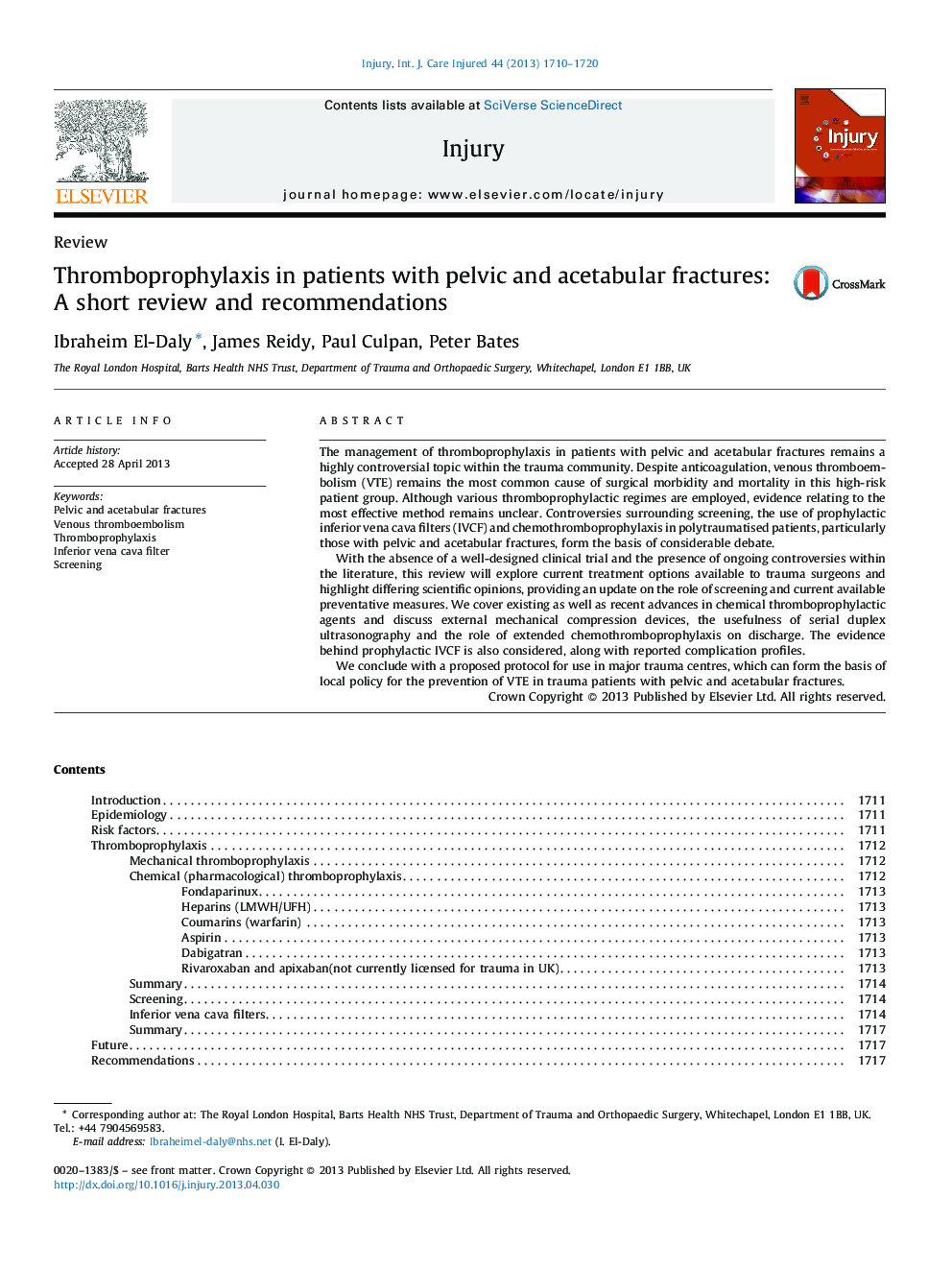| Article ID | Journal | Published Year | Pages | File Type |
|---|---|---|---|---|
| 3240046 | Injury | 2013 | 11 Pages |
The management of thromboprophylaxis in patients with pelvic and acetabular fractures remains a highly controversial topic within the trauma community. Despite anticoagulation, venous thromboembolism (VTE) remains the most common cause of surgical morbidity and mortality in this high-risk patient group. Although various thromboprophylactic regimes are employed, evidence relating to the most effective method remains unclear. Controversies surrounding screening, the use of prophylactic inferior vena cava filters (IVCF) and chemothromboprophylaxis in polytraumatised patients, particularly those with pelvic and acetabular fractures, form the basis of considerable debate.With the absence of a well-designed clinical trial and the presence of ongoing controversies within the literature, this review will explore current treatment options available to trauma surgeons and highlight differing scientific opinions, providing an update on the role of screening and current available preventative measures. We cover existing as well as recent advances in chemical thromboprophylactic agents and discuss external mechanical compression devices, the usefulness of serial duplex ultrasonography and the role of extended chemothromboprophylaxis on discharge. The evidence behind prophylactic IVCF is also considered, along with reported complication profiles.We conclude with a proposed protocol for use in major trauma centres, which can form the basis of local policy for the prevention of VTE in trauma patients with pelvic and acetabular fractures.
